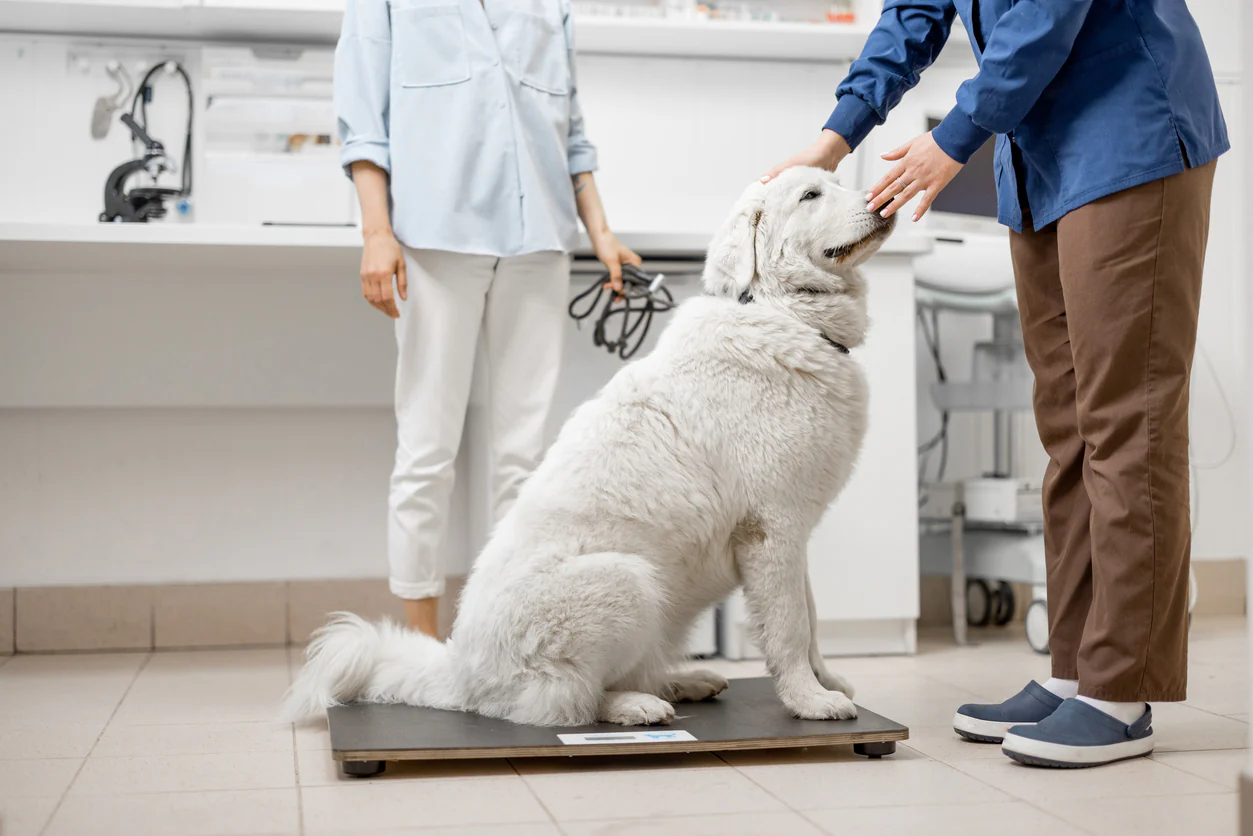Obesity is not just a human problem; it affects our canine companions, too. According to the Association for Pet Obesity Prevention, an estimated 59% of dogs in the United States were classified as overweight or obese in 2022. Just like in people, excess weight in dogs can lead to serious health issues, including joint problems, diabetes, heart disease, and decreased life expectancy.
If your furry friend is carrying a few extra pounds, it’s time to take action. In this guide, we’ll walk you through a complete weight loss toolkit for dogs, from diet strategies to proven exercise hacks, so you can help your pup live a longer, healthier, and more active life.
Why Weight Loss is Crucial for Dogs?
Dogs are naturally active creatures. Excess body fat restricts their movement, lowers energy levels, and reduces their quality of life. Even a 10% reduction in body weight can significantly improve your dog’s mobility, energy, and lifespan.
Health risks associated with canine obesity include:
- Arthritis and joint pain
- Respiratory difficulties
- Heart disease
- Diabetes mellitus
- Increased risk during surgery and anesthesia
Shortened life span
The good news? Most dogs respond well to structured weight loss plans when implemented correctly and consistently.
Step 1: Assessing Your Dog’s Weight and Health
Before starting any weight loss regimen, get a clear picture of your dog’s current condition. Visit your vet for a body condition score (BCS) evaluation. This will determine whether your dog is overweight and by how much.
You can also perform a quick home check:
- Ribs Test: You should be able to feel (but not see) your dog’s ribs without pressing hard.
- Waist Test: Viewed from above, your dog should have a noticeable waist behind the ribs.
- Tummy Tuck Test: From the side, there should be a tuck-up behind the ribcage.
Step 2: Diet Hacks That Work
Diet plays the most critical role in a dog’s weight loss journey. Here are science-backed hacks to help trim the fat:
1. Switch to a Weight Management Dog Food
Choose a food specifically designed for weight control, as well as understanding other diet-related behaviors like why dogs eat grass. These formulas are lower in calories but still provide all essential nutrients. Look for:
- High protein content to preserve lean muscle
- Fiber for satiety
- L-carnitine for fat metabolism
Always check with your vet before changing your dog’s diet.
2. Measure Every Meal
Free-feeding or estimating food portions is one of the fastest ways to overfeed. Use a measuring cup or digital kitchen scale to ensure consistency.
3. Control Treats and Snacks
Treats can be calorie bombs. A single dog biscuit may have 50+ calories! Try these alternatives:
- Carrot sticks
- Green beans
- Apple slices (without seeds)
Keep treats to less than 10% of your dog’s daily calorie intake. You can also check out Healthy low-calorie treats for dogs
4. Scheduled Meal Times Over Free-Feeding
Feeding your dog at consistent times rather than leaving food out all day can help regulate metabolism and reduce overeating.
5. Use Puzzle Feeders or Slow Feed Bowls
These tools make your dog work for their food, encouraging slower eating and mental stimulation while preventing bloating and gorging.
Step 3: Exercise Hacks That Keep Dogs Engaged
Exercise is a powerful tool in your dog’s weight loss journey. It boosts metabolism, improves mood, and enhances cardiovascular health.
1. Start With Daily Walks
Walking is the easiest and most accessible form of exercise. Aim for at least 30 minutes per day, gradually increasing intensity as your dog’s fitness improves.
- Mix it up: Try hill walks or stair climbing.
- Break it up: Two 15-minute walks are a great starting point.
2. Add Interval Play Sessions
Short bursts of high-energy play, such as fetch or tug-of-war, can torch calories. Set up a 15-minute play session 2–3 times a day.
3. Use Doggy Backpacks
For healthy adult dogs, a dog-safe backpack with lightweight weights (no more than 10% of their body weight) adds resistance to walks.
4. Set Up Indoor Obstacle Courses
Use cushions, boxes, and cones to build a DIY obstacle course indoors. It’s a great way to stay active during bad weather.
5. Try Canine Sports and Swimming
Activities like agility, rally obedience, and swimming are fun and effective ways to burn calories. Swimming is particularly good for older dogs with joint issues since it’s low-impact.
Step 4: Track Progress and Adjust Accordingly
Consistency is keybut so is flexibility. Monitor your dog’s progress and adjust food or activity levels as needed.
Tools You Can Use:
- Dog weight charts or apps to log progress
- Monthly weigh-ins at home or the vet
- Body Condition Score (BCS) checks
If you don’t see any changes within 4–6 weeks, consult your vet. Your dog may need a different dietary approach or blood tests to rule out medical issues like hypothyroidism.
Step 5: Mindset, Motivation, and the Power of Routine
Dogs thrive on routine and so do their humans. Here are a few final tips to keep both you and your pup on track:
- Make it a family effort: Ensure everyone feeds the dog the same amount and sticks to the program.
- Celebrate non-scale victories: Improved mood, energy, and mobility count too!
- Set realistic goals: A healthy weight loss is about 1–2% of body weight per week.
Bonus: Natural Supplements That May Help
Some natural supplements can assist in fat metabolism or satiety. Always check with your vet first, but options to explore include:
- L-carnitine helps in fat oxidation
- Probiotics improve gut health and nutrient absorption
- Omega-3 fatty acids reduce inflammation, especially in arthritic dogs
Real-Life Success Story: Luna the Labrador
Luna, a 6-year-old Labrador, weighed in at a hefty 90 pounds, 20 pounds over her ideal weight. With vet guidance, her owner implemented a strict portion-controlled diet, added daily 40-minute walks, and swapped out treats for frozen carrots. Within 6 months, Luna dropped 18 pounds, regained her agility, and is now the star of her local dog park agility class.
Trusted Resource for Further Reading
For pet owners who want to dig deeper into canine obesity and wellness, check out this comprehensive guide by the CDC on pet health. It offers insights on pet weight management, zoonotic diseases, and more.
Final Thoughts
Helping your dog lose weight isn’t just about looks; it’s about giving them the best life possible. With the right mix of diet, exercise, and love, you can transform your dog’s health and happiness. Remember, always consult with your veterinarian before making significant changes to your dog’s diet or exercise routine. Start today. Tailor this weight loss toolkit to your dog’s needs, and stick with it. They’ll thank you with every wag, jump, and cuddle.

